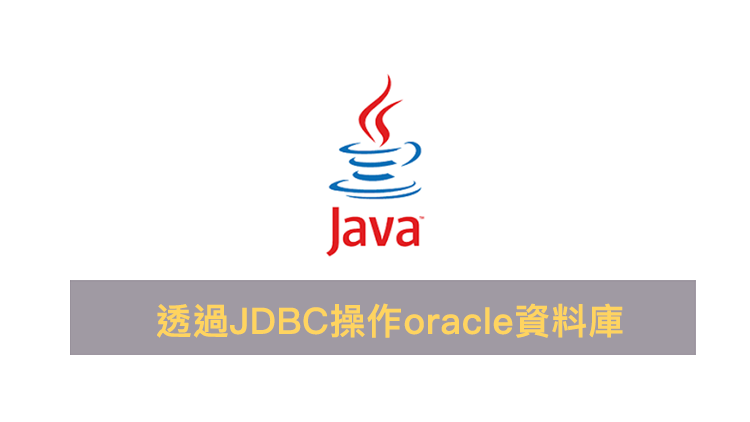本文講解如何實作存取oracle資料庫。
Import librarie(s)
|
1 |
import java.sql.*; |
Class
設定Connection為連線後產生之連線物件。
|
1 2 3 |
public class oracleDB { public Connection conn = null; } |
Connect function
實例化oracleDB物件後,透過此function設定Connection。
|
1 2 3 4 5 6 7 8 9 10 11 12 13 14 15 16 17 18 19 20 21 22 23 24 25 26 27 28 29 |
//Connect func public boolean CONNECT_ORACLE() { // Load the JDBC driver String driverName = "oracle.jdbc.driver.OracleDriver"; try { Class.forName(driverName); // Create a connection to the database String serverName = "xx.xx.xx.xx"; String portNumber = "1521"; // fill in your database port (ex:1521) String sid = "mysid"; String url = "jdbc:oracle:thin:@" + serverName + ":" + portNumber + ":" + sid; String username = "myUserName"; String password = "myPassword"; // set the connection object conn = DriverManager.getConnection(url, username, password); System.out.println("Database connected."); return true; } catch (ClassNotFoundException e) { // TODO Auto-generated catch block e.printStackTrace(); return false; } catch (SQLException e) { // TODO Auto-generated catch block e.printStackTrace(); return false; } } |
Implement the DML in Java
實作DML,這邊使用SELECT簡易示範。
透過上方connect function連線成功後,將connection參數傳入設計的指令function。
這邊示範獲取table欄位後回傳ArrayList<String[]>。
範例資料庫table設計如下:
| COL1 | COL2 | COL3 |
|---|---|---|
| test1 | aaa | bbb |
| test2 | ccc | ddd |
|
1 2 3 4 5 6 7 8 9 10 11 12 13 14 15 16 17 18 19 20 21 22 23 24 25 26 27 28 29 |
public ArrayList<String[]> SELECT_TABLE(Connection conn, String TABLENAME) throws SQLException{ Statement stmt = conn.createStatement(); String SELECT_STAT = "SELECT * FROM " + TABLENAME; ResultSet rows = stmt.executeQuery(SELECT_STAT); ArrayList<String[]> rows_db = new ArrayList<String[]>(); int count=0; while (rows.next()) { // Assume we have 7 columns in this table String[] dataArr = new String[7]; String colStr = ""; count+=1; for(int i=0;i<3;i++){ colStr = "COL"; colStr += Integer.toString(i+1); dataArr[i] = rows.getString(colStr); } rows_db.add(dataArr); } // release the statement resource stmt.close(); if(count==0){ System.out.println("No data.\n"); return null; }else{ return rows_db; } } |
- 使用Statement宣告將傳送出的指令容器。
- 設計DML指令字串。
- 利用Statement中的executeQuery方法,傳入指令字串,取得回傳之ResultSet。
- 解析ResultSet,利用ResultSet.next()逐行解析。
Advanced Statement
Statement若較為複雜,可利用下面這種方法設計。
|
1 2 3 4 5 6 7 8 9 10 11 12 13 14 15 16 |
String INSERT_STAT="INSERT INTO TABLE VALUES (?,?,?)"; PreparedStatement pstmt = conn.prepareStatement(INSERT_STAT); pstmt.setString(1, data[0]); pstmt.setString(2, data[1]); pstmt.setString(3, data[2]); try{ pstmt.executeUpdate(); pstmt.close(); return true; }catch(SQLException e){ System.err.println(e); pstmt.close(); return false; } |
PreparedStatement可以先將statement架構先建好,等參數準備好後再將其填入。此種方法常用於製作動態指令。
Close your resources
不管是Connection或是Statement操作完畢,務必將資源釋放。
|
1 2 3 4 |
statement.close(); connection.close(); |

留言